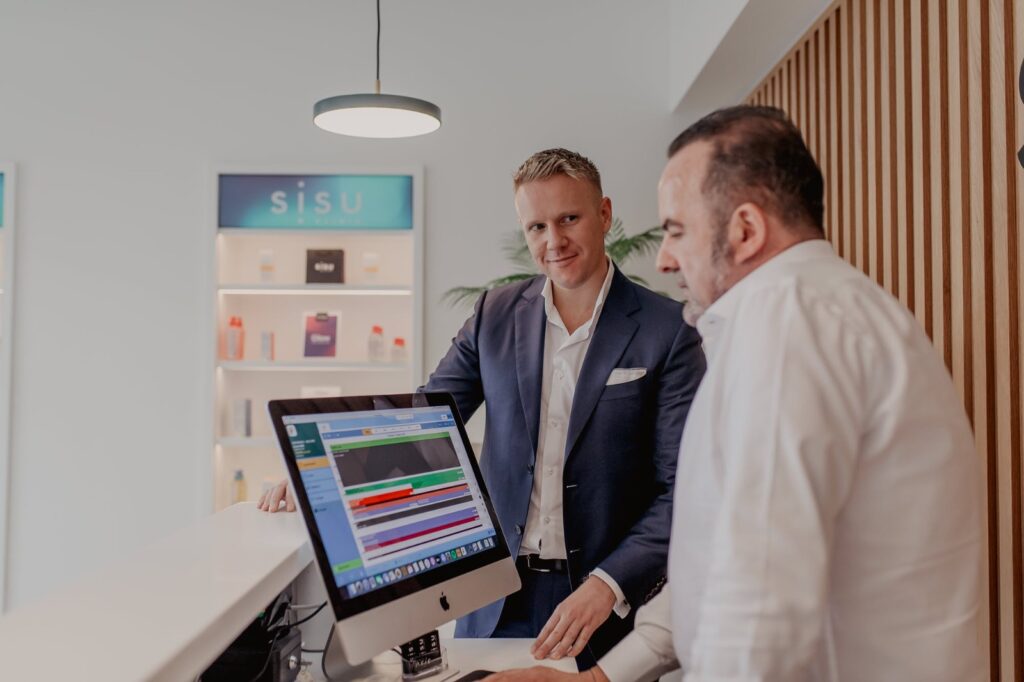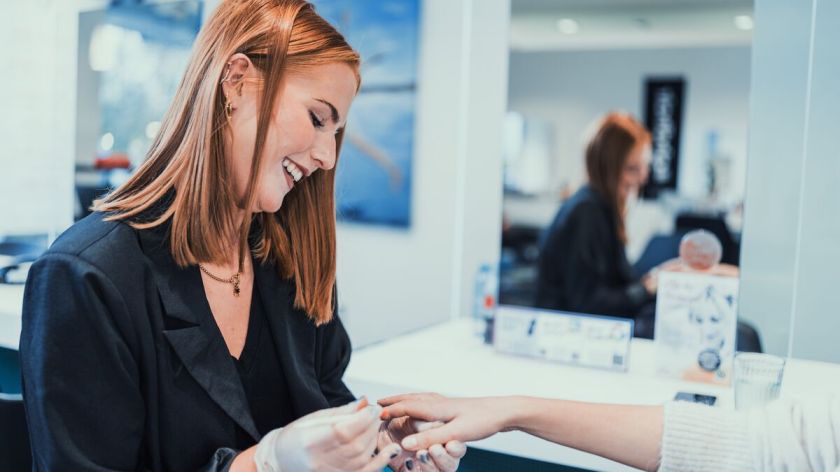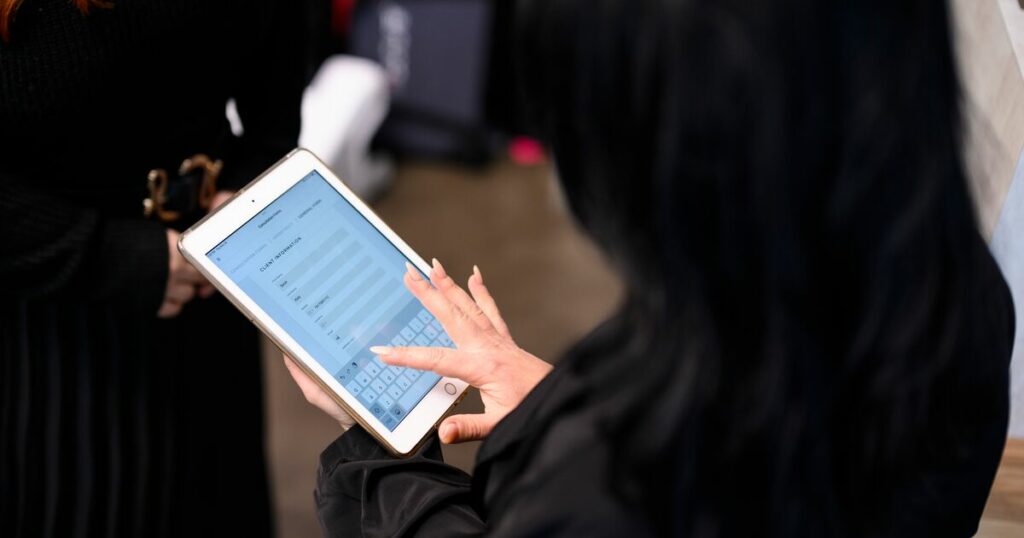In today’s economy, running a successful salon, spa, or clinic can be difficult. From the ever-increasing cost of living to political instabilities and staffing issues, finances are a bone of contention for many business owners across the globe right now. It can be difficult to understand how to price your services in a manner that acknowledges their value and pays your business fairly without upsetting your loyal clients.
In July 2024, Phorest conducted a global survey asking a number of people in the salon and spa industry; “what defines a premium salon to you?” Interestingly, very few people answered pricing as the defining factor of a top-class salon, explaining several other factors that defined “premium” to them such as;
- The customer experience
- The business’ brand identity
- The staff’s behaviour
When a business nails these “premium” elements, it starts to provide a level of value to clients that overcomes pricing. This value allows them to implement higher costs without frustrating clients.
So with that in mind, we’re answering the question…
How Do I Make My Salon Feel Premium, So I Can Start Charging Premium Prices?
As a business owner, finances are at the core of everything you do. How can you boost your revenue and charge your services at a rate that genuinely shows their value? Here are the top insights we gathered from our Premium Research Survey on creating that premium feeling (and pricing!) in your salon, spa, or aesthetic clinic.
The Client Experience is Everything

Something almost unanimously agreed upon in the premium salon, clinic, and spa space is that the client experience forms the foundation of everything. When paying a premium price for a service, your client must feel like they’re getting more for their money. Their trip to the salon, clinic, or spa must go beyond the standard and be memorable.
How this is achieved varies from business to business. Memorability could come from your salon having upmarket, luxurious decor. It could be your spa using the most innovative products and technology on the market. It might be the overall environment in the salon or spa, the level of aftercare provided, or your team’s dedication to ensuring everyone who visits feels safe and included. If you want your clients to spend more money visiting your business, you must give them something worth spending on.
One survey participant explained to us that a “best in class” salon is a; “Customer-orientated business… from having a clean space to completing the best consultations.” Putting your clients first is the mark of a top-class business.
Great Retention Rates Are Vital
Did you know that it costs 400-500% more to attract a new client than it does to retain an existing one? In the professional hair and beauty industry, repeat clients are vital for success. Not only do they ensure recurring revenue for your business, but they also act as referral magnets, offer honest opinions on the culture and quality of your salon, and are more likely to pay more for your services.
When clients experience consistent, high-quality services and a personalised, memorable atmosphere, they will visit your salon repeatedly. Premium salons with high retention rates don’t just meet expectations, they exceed them. Foster strong relationships and deliver consistent results that make clients want to stay with you, and they’ll be more willing, in turn, to pay premium prices.
Graeber and Company, a premium hair and skin care salon in the US, defines a premium salon as one with:
- Recognised accolades
- A penchant for luxury
- A menu of high-quality services,
- Memorable client touch-points
- A space where clients feel safe and cared for
In short; all the things that will encourage clients to come back, over and over again.
Brand Identity Forms Good & Bad Perceptions

A premium salon, spa, or clinic, has an instantly recognisable brand. Premium branding doesn’t have to fit the luxurious look, or any specific aesthetic, but it should be clear and consistent. Branded messaging about who you are and what you do should resonate both online and offline.
Your banding should reflect the quality of your services, the expertise of your team, and the unique experiences you foster within the walls of your business. This will attract your ideal clients while also setting expectations, leading to a more premium experience overall.
To ensure your online and offline brand identity is premium…
- Create detailed brand guidelines (colours, tone of voice, image, vibe) that accurately reflect your business, and use these everywhere, from your interior decor to your website and the images you upload on socials. Consistency is key. Find out more on how to do this in our recap of Sophia Hilton’s (Not Another Salon) talk at the 2023 Salon Owners Summit.
- Share your five-star reviews far and wide! Make sure to request reviews from each client that visits (Phorest’s Online Reputation Tool can automate this and make it easier), and share them widely across your socials and review profiles to cement yourself as a best-in-class salon, clinic, or spa.
- Be mindful of your salon decor. As aforementioned, “premium” doesn’t have to mean “luxury,” but it is important to invest in the overall look of your business. Keep it clean, clutter-free, and comfortable for clients to ensure your offline brand is just as impressive as your online one.
- Your team is your brand. From the moment your clients walk through the door, they’re interacting with your team, whose behaviour can make or break the brand you’ve built. Brief your team on brand expectations to ensure every client who walks through your doors is met with a friendly, professional, and consistent service that makes your visitors feel cared for.
When your brand identity is strong and consistent, clients are more likely to respect and value what you offer, which is crucial for sustaining a successful premium salon. To quote Nate, owner of Luxe Salon & Spa; “Best in class salons are very clearly identifiable and defined by their brand culture. You know the staff, and clients, buy into the brand. You can just feel it.”
Your Team Is the Backbone of Your Business

The professionalism of your staff plays a crucial role in shaping how your salon is perceived and directly influences your ability to charge premium prices. This professionalism shouldn’t be stuffy or too formal, but a team that acts warm, welcoming, and friendly to clients will be more highly regarded by visitors.
Professionalism should be evident in every client interaction, from the warm welcome at the door to the personalized attention during services. When your team embodies the values of your brand and consistently delivers a high level of service, it elevates the overall client experience, justifying the premium prices you charge.
To keep your team aligned on what is expected in terms of professionalism, why not create a customer service manifesto? Get everyone’s input when creating this to ensure your team feel heard- they are the experts on what your clients need and want, after all.
Another way to ensure a professional and aligned team is by investing in ongoing staff training and weaving your customer service charter throughout the hiring and onboarding process. Doing this ensures that the premium nature of your salon is deeply understood and embodied by team members old and new. When they understand this, so do your clients, who will be willing to pay more for this best-in-class experience.
Want more information on how to provide premium customer service? Check out our blog on the topic here!
Investing in Education Pays Off

Education was another hot topic among survey participants, many of whom mentioned that a premium salon can be defined by both the level of education that team members had, and the business’s willingness to continue investing in education.
By continuously enhancing the skills and knowledge of your team, you keep your salon at the forefront of industry trends and techniques. This commitment to education elevates the quality of services you offer while also positioning your business as a leader in the field, justifying premium pricing.
The biggest high-end businesses in the industry prioritise education in all its forms- from ongoing skills training to encouraging the team to read and attend industry conferences. Education opens doors. It fosters a culture of excellence within your salon. It helps your team to feel empowered, motivated, and supported to deliver outstanding results. By putting education first, you’re not just improving your team’s expertise, you’re also reinforcing your brand’s reputation for quality, innovation, and professionalism. These are key factors in establishing a premium brand and experience that clients are willing to pay more for.
Building a Premium Strategy That Pays

Creating a premium salon, spa, or aesthetic clinic is about more than just offering high-end services. It’s about crafting an experience that clients value and are willing to pay more for. From enhancing the client experience and fostering strong retention rates to building a consistent and recognisable brand, every detail counts. Your team’s professionalism and ongoing education also play critical roles in setting your business apart as a premium destination.
By implementing these strategies, you’re elevating the perceived value of your services while also positioning your salon for long-term success, making your business the place where clients are happy to spend more.
Calculating Service Costs You Can Stand Behind

So how do you put a monetary value on all these things we have discussed to come up with a premium price tag for your services that you can stand behind?
To effectively price premium salon and spa services, you need to consider both the tangible costs (products, labor, rent) and the intangible aspects (experience, expertise, brand value). A margin of 20-30% is common in high-end services, but the exact figure should reflect your brand positioning and market dynamics.
There isn’t an exact formula to it, but we’ll try to get as close as we can.
1. Cost of Goods Sold (COGS)
Products Used: Calculate the cost of all products used during services (e.g., hair products, skincare products).
Tools and Equipment: Consider the depreciation and maintenance costs of premium tools and equipment over a particular period (e.g. a year) as well as things like linen laundering. Split it across the total number of services you would typically complete over the same period to get the cost per service.
2. Labor Costs
Staff Salaries: Calculate the hourly wage of staff, including any bonuses or commissions.
Training and Upskilling: Include the cost/time spent on ongoing training programs and certifications. This is particularly important in premium salons where staff are expected to be at the cutting edge of trends and techniques. If your staff spend 1 day per month training for example, split this time and cost investment across the services completed in a month.
3. Overheads
Rent and Utilities: Premium locations often come with higher rents, especially if located in high-end districts.
Ambiance Costs: Consider the cost of maintaining a luxurious ambiance, which may include décor, lighting, music, and refreshments.
Administrative Costs: Include costs associated with management, marketing, and customer service.
4. Time Considerations
Service Duration: Premium services often take longer due to the attention to detail and the need for personalised experiences. Factor in the time cost of longer service durations.
Preparation and Clean-up: Include the time required for preparing for and cleaning up after each service, as premium services may require more thorough preparation and follow-up.
5. Experience-Related Costs
Customer Experience Enhancements: Factor in costs for small touches like complimentary beverages, customized playlists, aromatherapy, or premium linens.
Leadership and Management: Include the cost of strong leadership which ensures that the premium experience is consistent. This might include the salaries of experienced managers or directors and team building days.
6. Target Profit Margin
Desired Profit Margin: Premium services typically command a higher profit margin than standard services. Aim for a margin of 20% to 30%, though this can vary based on the market and competitive landscape.
Brand Equity and Perceived Value (Conduct a Market Audit)
Brand Premium: Factor in the premium customers are willing to pay for the brand itself. Strong brand equity allows for higher pricing.
Customer Willingness to Pay: Conduct market research to understand what your target market is willing to pay for a premium experience.
Market Positioning: Consider how your pricing compares with competitors in your area and niche. High-end services often have a perceived value, where higher prices reinforce the premium positioning.
Formula for Pricing
Service Price = (COGS + Labor Costs + Overheads + Experience Costs) / (1 – Desired Profit Margin).
Let’s go through a detailed example – of course, this will be totally unique to your salon’s situation, but gives an idea of how to cover the typical factors associated with costing services, as well as some you might try to include to cover some of the hidden time and costs spent creating a premium guest experience.
Step 1: Break Down All Cost Components
1. Labor Costs
- Hourly Rate of Prefessional: 20/hour.
- Service Duration: 2 hours.
- Commission: Assume a 15% commission on the service price.
- Upskilling Time: Let’s say the salon invests 1 day (8 hours) per month for upskilling. This is 5% of the professional’s salary hours per month (so you’ll see this as 0.05 in the calculation below)
Labor Cost Calculation:
- Base Labor Cost: Base Labor Cost = 20/hour × 2 hours = 40
- Upskilling Adjustment: Upskilling Cost = 20/hour × 2 hours × 0.05 = 2
- Total Labor Cost (without commission): 42
2. Commission Costs
- Since commission is a percentage of the final service price, it is added at the end of the calculation once the base price is determined.
3. Cost of Goods Sold (COGS)
- Products Used: Let’s say 15 for the professional products used.
4. Overheads (Divide full cost per month by the number of services completed each month)
- Rent and Utilities: 10 per service.
- Administrative Costs: 5 per service.
- Leadership Costs: Assume the salon allocates 2 per service for management salaries and leadership activities.
5. Experience-Related Costs
- Customer Experience Enhancements: 5 per service.
6. Team Building Costs
- Team Building Investment: Let’s say team building events cost 30,000 annually and divide this by the number of services completed in a year (again for example let’s say that’s 7,200 services per year).
- Team Building Cost per Service: Team Building Cost per Service = 30,000 / 7,200 services = 4.17
Step 2: Calculate Total Base Costs (Before Commission)
Total Costs per Service (excluding commission):
Total Costs = Total Labor Cost + COGS + Overheads + Experience Costs + Team Building Costs
Total Costs= 42+15+ (10+5+2) + 5 + 4.17 = 83.17
Step 3: Determine Desired Profit Margin
Let’s aim for a 25% profit margin.
Step 4: Calculate the Preliminary Service Price (Before Adding Commission)
Using the formula:
Step 5: Incorporate Commission Costs
The commission is 15% of the final service price. To find the final service price including commission, we need to account for this additional cost, so we add an additional 16.63.
Final Result:
The salon should charge 133.07 for this example service to cover all costs, including the professional’s hourly wage, commission, upskilling, team building, overheads, and experience costs, while achieving a 25% profit margin. This number should be compared to the insights from your market audit and adjusted accordingly.
Summary of the Calculation:
- Labor Cost (Including Upskilling): $42.00
- COGS (Products): $15.00
- Overheads (Rent, Admin, Leadership): $17.00
- Experience Costs: $5.00
- Team Building Costs: $4.17
- Total Base Costs (Before Commission): $83.17
- Preliminary Service Price (Before Commission): $110.89
- Commission (15%): $16.63
- Final Service Price: $133.07
This pricing ensures that the salon covers all operational costs, invests in staff development and team morale, and still maintains a healthy profit margin.
Together, We Grow
Phorest is the software of choice for thousands of premium salons



